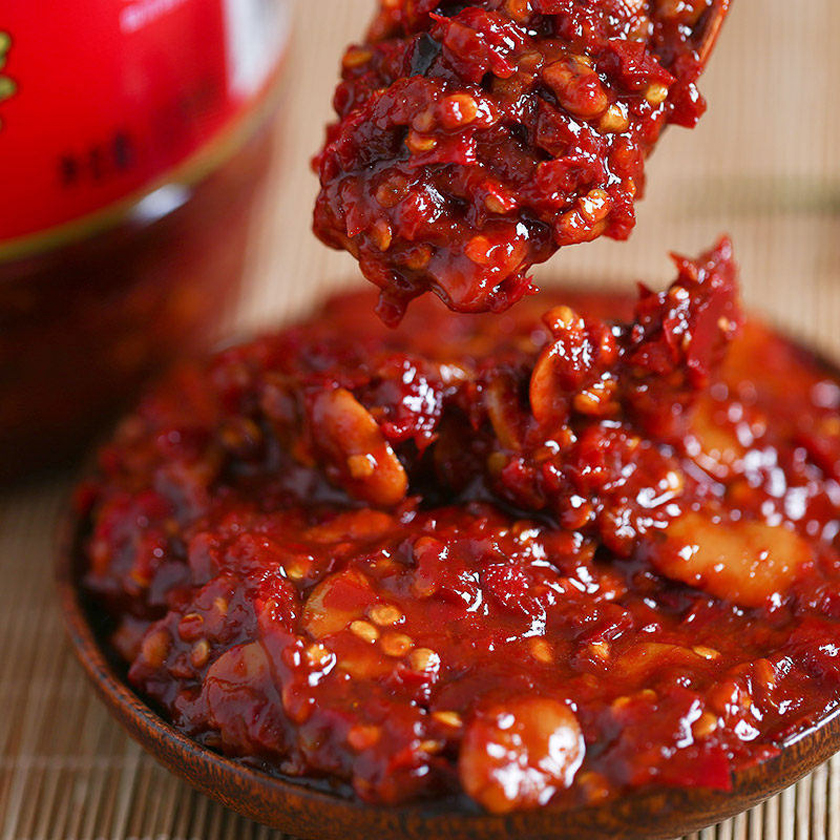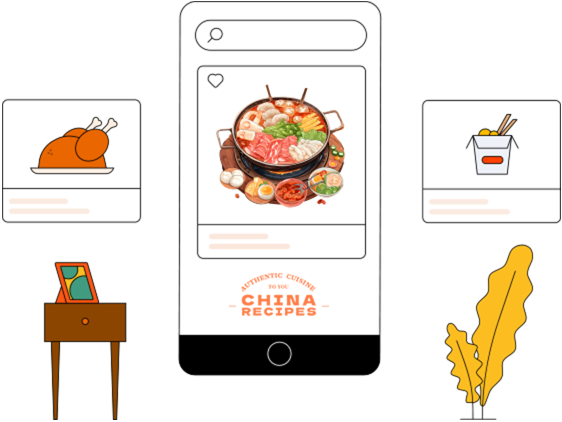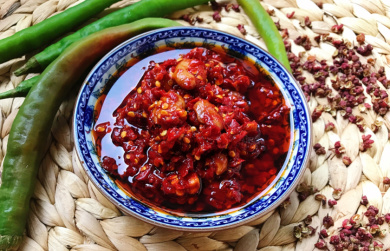Is Doubanjiang Like Miso? A Deep Dive

As a food blogger, I'm often bombarded with soul-searching questions from my fans: "Are doubanjiang and miso related? Can I use miso to season Sichuan-style twice-cooked pork? What can I use as a substitute when I can't find doubanjiang?" Today, I'll explain all these clearly for everyone at once.
Are doubanjiang and miso similar?
Similarity: ⭐⭐⭐ (60%)
Common features: Both use soybeans as the core ingredient for fermentation, and rely on microorganisms to break down proteins to produce umami substances.
Differences:
Doubanjiang: It is a traditional Chinese fermented chili sauce. The main ingredients are broad beans (or soybeans), chili peppers, and flour. Sichuan-style doubanjiang must include Erjingtiao chili peppers, which give it the iconic bright red color and spiciness.
Miso: It is a traditional Japanese condiment. The main ingredients are soybeans and rice/barley koji (Aspergillus). Some Japanese misos also include grains such as barley and black rice, forming a complex flavor profile after fermentation.
Fermentation methods:
Doubanjiang: Adopts the "sun-drying sauce method", which requires 1 - 3 years of exposure to the sun during the day and the dew at night in a pottery jar. It relies on naturally occurring molds and yeasts in the air for fermentation. The sauce turns reddish-brown and has a thick texture.
Miso: Relies on artificial inoculation with Aspergillus (such as Aspergillus oryzae) and ferments at a low temperature of 15 - 20°C for 6 months to 3 years. The color of the sauce ranges from light yellow to dark brown, and it has a delicate texture.
Flavors:
The flavor differences between the two are also quite obvious.
Doubanjiang: Doubanjiang features a dominant flavor of spiciness, saltiness, and umami. The pungency of chili peppers and the unique aroma after the fermentation of broad beans blend together, making it suitable for adding a rich flavor to heavy-flavored dishes like Sichuan cuisine.
Miso: Miso presents a complex flavor of saltiness, sweetness, and richness. The umami produced by fermentation is prominent, with a faint aroma of rice or wheat, making it more suitable for making Japanese soups, stews, etc.
So, although they may seem similar in color at first glance, doubanjiang and miso are actually two sauces with very different characteristics.
Can I Substitute Doubanjiang with Miso?
Feasibility of substitution: ⭐⭐ (30% compatibility rate, requires scenario-based adaptation)
Core contradictions:
Flavor aspects:
Doubanjiang: Spiciness level ranges from 3 - 5, with saltiness and umami as the main flavors. The spicy aroma is highly penetrating, making it suitable for heavy-flavored stir-fries.
Miso: Spiciness level ranges from 0 - 1, with umami as the main flavor. The saltiness is lower than that of doubanjiang (sodium content is about 800mg/15g compared to 1200mg/15g for doubanjiang), and it is difficult to directly replicate the "spicy, numb, fresh, and fragrant" flavor of Sichuan cuisine.
Texture differences:
Doubanjiang: It has a thick texture, containing chili pieces and broad bean chunks, making it suitable for coating and adding color.
Miso: It has a delicate texture and easily dissolves after being cooked for a long time, making it suitable for making soup and marinating.
Scenario-based substitution plans:
Scenarios worth trying:
Japanese-improved Mapo Tofu: Replace doubanjiang with red miso + chili powder. The umami is enhanced but the spiciness is halved, making it suitable for those who can't tolerate much spiciness.
Miso-grilled meat: Make a sauce with white miso, brown sugar, and sake. Marinate pork belly before frying and roasting. The Japanese-style sweet and salty flavor replaces the traditional twice-cooked pork.
Pitfall guide:
Quantity adjustment: Use 30% - 50% more miso than doubanjiang (for example, if you originally needed 1 spoon of doubanjiang, use 1.5 spoons of miso + 0.5 spoon of chili powder).
Cooking order: Miso is not suitable for long cooking. Add it 3 minutes before taking the dish off the heat to avoid losing the umami flavor.
What is a Substitute for Doubanjiang?
Plan 1: Tomato Paste + Sriracha/Tabasco + Soy Sauce
Suitable scenarios: Red oil wontons, simple version of Mapo Tofu, tomato and spicy stew
Taste restoration degree: ⭐⭐⭐⭐ (80% similarity)
Combination principle:
Tomato Paste: Provides a thick texture and natural fruit acids (to replace the fermented acid)
Sriracha: The complex spiciness of garlic, chili, and sugar (to replace the spicy aroma of doubanjiang)
Soy Sauce: The basic flavor of saltiness and umami (to replace the fermented umami)
Remake formula:
1 spoon of tomato paste + 1 spoon of Sriracha + 1/2 spoon of soy sauce + 1/4 spoon of brown sugar
Advanced tips:
Add 1/8 spoon of Chinese Five Spice to simulate the spicy and fragrant flavor of doubanjiang.
Add 1 spoon of red pepper flakes when stir-frying to enhance the visual impact.
Plan 2: Doenjang + Gochugaru + Shaoxing Wine/Dry Sherry
Suitable scenarios: Korean-improved twice-cooked pork, kimchi-flavored stewed meat, spicy seafood soup
Taste restoration degree: ⭐⭐⭐ (70% similarity, more Korean-style)
Combination principle:
Doenjang: The salty and umami flavor of fermented soybeans (sharing the same origin as doubanjiang)
Gochugaru: Medium spiciness and smoky aroma (to replace the spicy aroma of Erjingtiao chili)
Shaoxing Wine/Dry Sherry: Removes fishy smell and adds fragrance (to simulate the fermented wine aroma of doubanjiang)
Remake formula:
1 spoon of doenjang + 1/2 spoon of gochugaru + 1 spoon of Shaoxing Wine/Dry Sherry + 1/4 spoon of garlic powder
Pitfall guide:
Doenjang is saltier than doubanjiang, so reduce the amount by 1/3.
Add 1/4 spoon of Apple Cider Vinegar before long cooking to make up for the acidity.
Plan 3: Yellow Bean Sauce + Smoked Paprika + Oyster Sauce
Suitable scenarios: Cantonese-improved spicy stir-fried clams, vegetarian version of twice-cooked pork, barbecue dipping sauce
Taste restoration degree: ⭐⭐⭐ (65% similarity, suitable for Southeast Asian flavor fusion)
Combination principle:
Yellow Bean Sauce: Cantonese fermented bean sauce (the basic flavor of saltiness and umami)
Smoked Paprika: Simulates the burnt and spicy flavor of doubanjiang
Oyster Sauce: Adds the sweet umami of seafood (balances the single saltiness of yellow bean sauce)
Remake formula:
1 spoon of yellow bean sauce + 1/2 spoon of smoked paprika + 1/2 spoon of oyster sauce + 1/4 spoon of ginger powder
Creative usage:
Replace doubanjiang to marinate grilled chicken wings. After brushing with honey, bake at 200°C for 20 minutes.
Mix with Peanut Butter to make Southeast Asian-style satay sauce.
Plan 4: Worcestershire Sauce + Harissa + Brown Sugar
Suitable scenarios: Mexican-style spicy stewed beef, improved American barbecue sauce, spicy hamburger patty
Taste restoration degree: ⭐⭐ (50% similarity, suitable for bold mix and match)
Combination principle:
Worcestershire Sauce: The complex saltiness and umami of fermented fish sauce and spices (to replace the fermented umami)
Harissa: The intense spiciness of North African chili and spices (to replace the spicy aroma of doubanjiang)
Brown Sugar: The caramel sweetness balances the sour and spicy flavors (to simulate the fermented sweetness of doubanjiang)
Remake formula:
1 spoon of Worcestershire Sauce + 1 spoon of Harissa + 1 spoon of brown sugar + 1/2 spoon of garlic paste
Experimental recipes:
Replace doubanjiang to coat pork spareribs. Slowly roast at low temperature for 4 hours and then brush with maple syrup.
Mix with Mayo to make a spicy dipping sauce for fried chicken.
Plan 5: Homemade "Pseudo-Doubanjiang" Emergency Kit (done in 3 minutes)
Material list:
Canned tomato sauce
Thai sweet chili sauce
Soy sauce
Chili powder
Garlic salt
Quick recipe:
3 spoons of tomato sauce + 1 spoon of Thai sweet chili sauce + 1/2 spoon of soy sauce + 1/2 spoon of chili powder + 1/4 spoon of garlic salt
Operation guide:
Slowly heat the mixture until it simmers slightly.
Sprinkle 1 spoon of white sesame seeds to add fragrance.
After cooling, pour it into a sealed jar and refrigerate (can be stored for 1 week).
Ultimate Guide: How to Choose Sauces Based on Dishes?
For those who pursue spicy, numb, fresh, and fragrant flavors: Doubanjiang > Spicy Chili Sauce > Korean Doenjang.
For those who pursue Japanese sweet and fresh flavors: Miso > Korean Doenjang > Doubanjiang (requires modification).
For those who pursue vegetarian fermentation: Miso > Doubanjiang (vegetarian version) > Natto.
For those who want to add flavor quickly: Doubanjiang > Miso (requires long cooking) > Homemade Compound Sauce.

Uses of Doubanjiang
1.Sichuan cuisine seasoning:
Twice-cooked pork: Doubanjiang + fermented soybeans + green garlic, stir-fry to get the "lamp petal-shaped" pork slices.
Mapo Tofu: Doubanjiang + Chinese prickly ash powder + minced beef, creating the seven unique flavors of "numb, spicy, hot, fresh, tender, crispy, and fragrant".
2.Hot pot base:
Beef tallow hot pot: Doubanjiang + beef tallow + glutinous rice wine + spices, simmer to make a bright red base soup.
3.Magic ingredient for braised dishes:
Braised Crucian Carp with Doubanjiang: Make incisions on the fish body, smear doubanjiang, fry until golden on both sides, and then add clear water to simmer.
4.Adding flavor to vegetarian dishes:
Stir-fried Green Peppers: Fry green peppers until wrinkled, quickly stir-fry with doubanjiang + minced garlic. You can taste the meaty flavor from this vegetarian dish.
5.Dipping sauce base:
Hot pot dipping sauce: Doubanjiang + mashed garlic + coriander + sesame oil, a soul dipping sauce recognized by people in Sichuan and Chongqing.
6.Marinating sauce:
Pickled Chicken Feet with Spicy Peppers: Doubanjiang + wild chili peppers + white vinegar, marinating to make a sour, spicy, and appetizing snack.
7.Barbecue brushing sauce:
Baked Eggplant: Minced garlic + doubanjiang + cumin powder. Let the eggplant absorb the sauce and then stir-fry until fragrant.
8.Quick and easy dish for lazy people:
Doubanjiang Fried Rice: Leftover rice + eggs + doubanjiang, creating an amazing fried rice in 5 minutes.
9.Vegetarian stock:
Vegetable soup: Doubanjiang + tomato + shiitake mushrooms, simmering to make a rich and umami-flavored soup.
Uses of Miso
1.Miso soup:
Basic version: Bonito broth + red miso + soft tofu + wakame, simmering to make a healing soup in 3 minutes.
2.Stews and braises:
Miso Beef: Beef slices + white miso + sake + mirin, slowly stew until tender and soft.
3.Marinating sauce:
Miso-marinated Mackerel: Red miso + sake + sugar, marinate for 24 hours and then fry or bake. The fish will be fresh, sweet, and flavorful.
4.Salad dressing:
Miso Sesame Dressing: White miso + sesame paste + rice vinegar + honey, making a Japanese-style salad dressing.
5.Dipping sauce:
Grilled Meat Dipping Sauce: Miso + wasabi + lemon juice, cutting the greasiness and enhancing the freshness.
6.Baking:
Miso Scones: Red miso + butter + low-gluten flour, creating a Japanese-style afternoon tea with a blend of salty and sweet flavors.
7.Vegetarian cuisine:
Grilled Vegetables with Miso: Pumpkin + shiitake mushrooms + carrots, brush with miso sauce and bake until charred and fragrant.
8.Soup base:
Miso Ramen: Pork bone soup base + red miso + char siu + soft-boiled egg, the essence of Japanese ramen.
9.Cold dishes:
Miso Cold Noodles: Buckwheat noodles + chilled miso sauce + shredded cucumber, a summer cooling delicacy.























